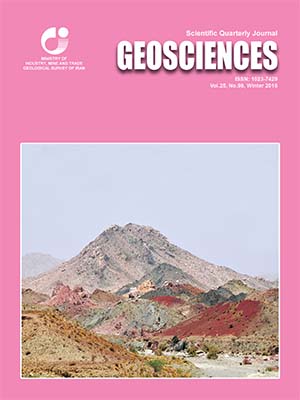Document Type : Original Research Paper
Authors
1 M.Sc. Student, Department of Geology, Faculty of Earth Sciences, Shahid Beheshti University, Tehran, Iran
2 Associate Professor, Department of Geology, Faculty of Earth Sciences, Shahid Beheshti University, Tehran, Iran
3 M.Sc., Exploration Directorate, NIOC, Tehran, Iran
Abstract
Babahabib and Sarkan oilfields are located in southwest of the Lurestan Province and 10km west of Pul-dokhtar City. The study area is situated in the Lurestan tectonostratigraphic region, northwest of the folded Zagros structural sub-zone. Although the Lurestan region is part of the Zagros sedimentary basin, it shows essential differences in terms of sedimentary conditions and types, folding and thickness of strata sequences when compared with the Dezful and Fars basins. Information obtained from seismic profiles, well logs and four cross-sections (AA´ to DD´) drawn perpendicular to structural trend indicates the effect of the detachment surfaces on structural geometry of folds in study area. Of the most important dataset used in this study are 2D and 3D seismic lines along with well logs, which were used in geometrical analysis of sub-surface structures. According to surface and subsurface structural geometries of fold in central part of the Lurestan region, two detachment surfaces including (1) Garu Formation as the middle detachment surface and (2) Amiran Formation as the upper detachment surface are interpreted to have affected subsurface anticlines (Bangestan group) and small surficial anticlines, respectively. The thickening of the upper detachment surface in western part of the study area has resulted in the development of folds with short wavelength and amplitude in outcrops. This thickness change causes disharmonic folding in surficial anticlines relative to the subsurface anticlines. The geometry of the Sarkan and Baba-Habib anticlines is represented as asymmetric detachment fold in which the increased stress in middle parts of the anticlines plus back-thrust structures have developed a geometry resembling Mitras’s (2002) model-1 faulted detachment fold. This model is formed by the high competency contrast between the Garu shaly units at the base and the overlying competent formations of the Bangestan group. Relay geometry of thrusts, which have been initiated from incompetent lower units, is one of the most important factors in controlling the en-echelon arrays of sub-surface anticlines in the area. Surficial geometries of the anticlines have been controlled by the upper detachment surface.
Keywords

